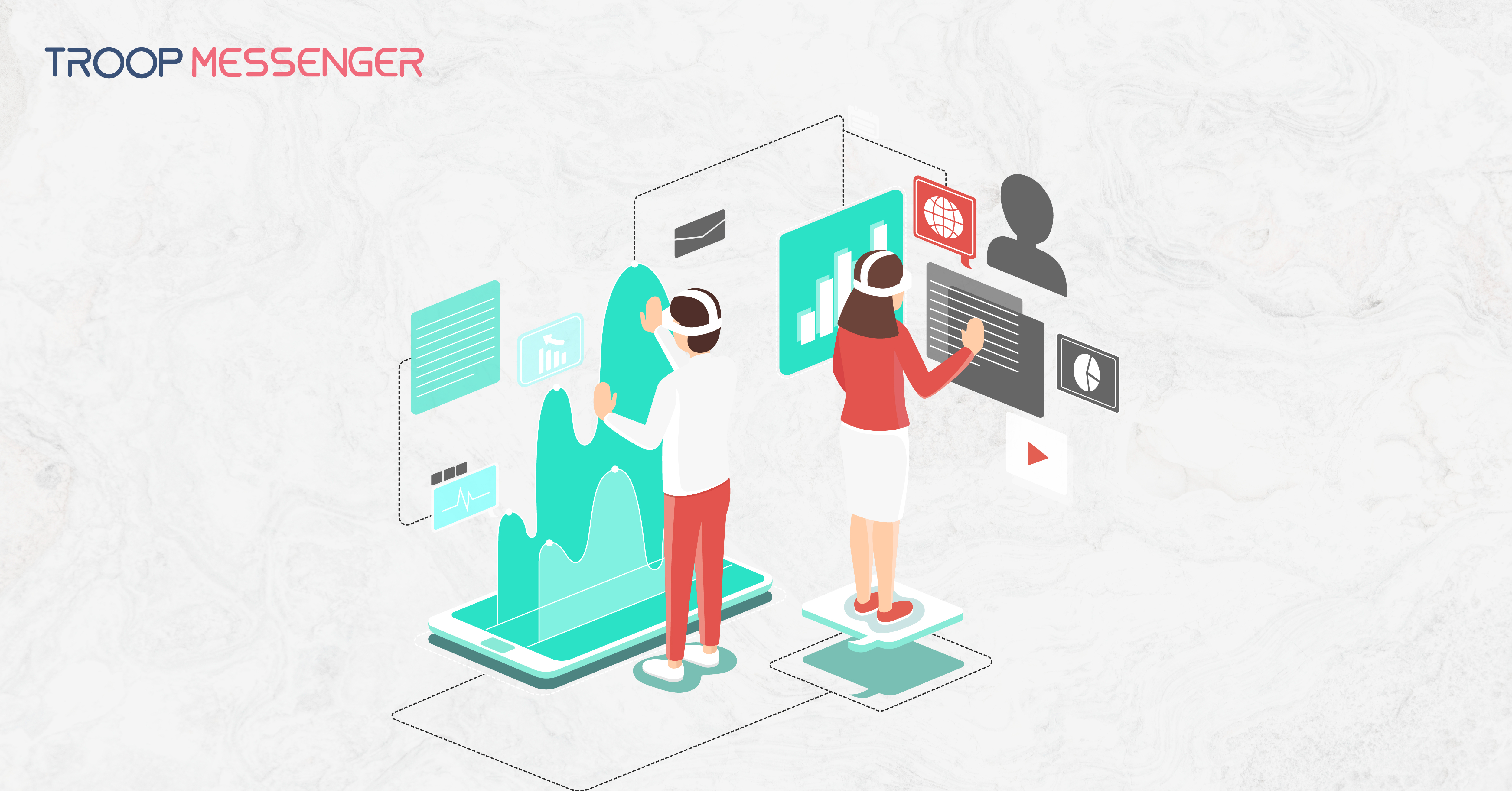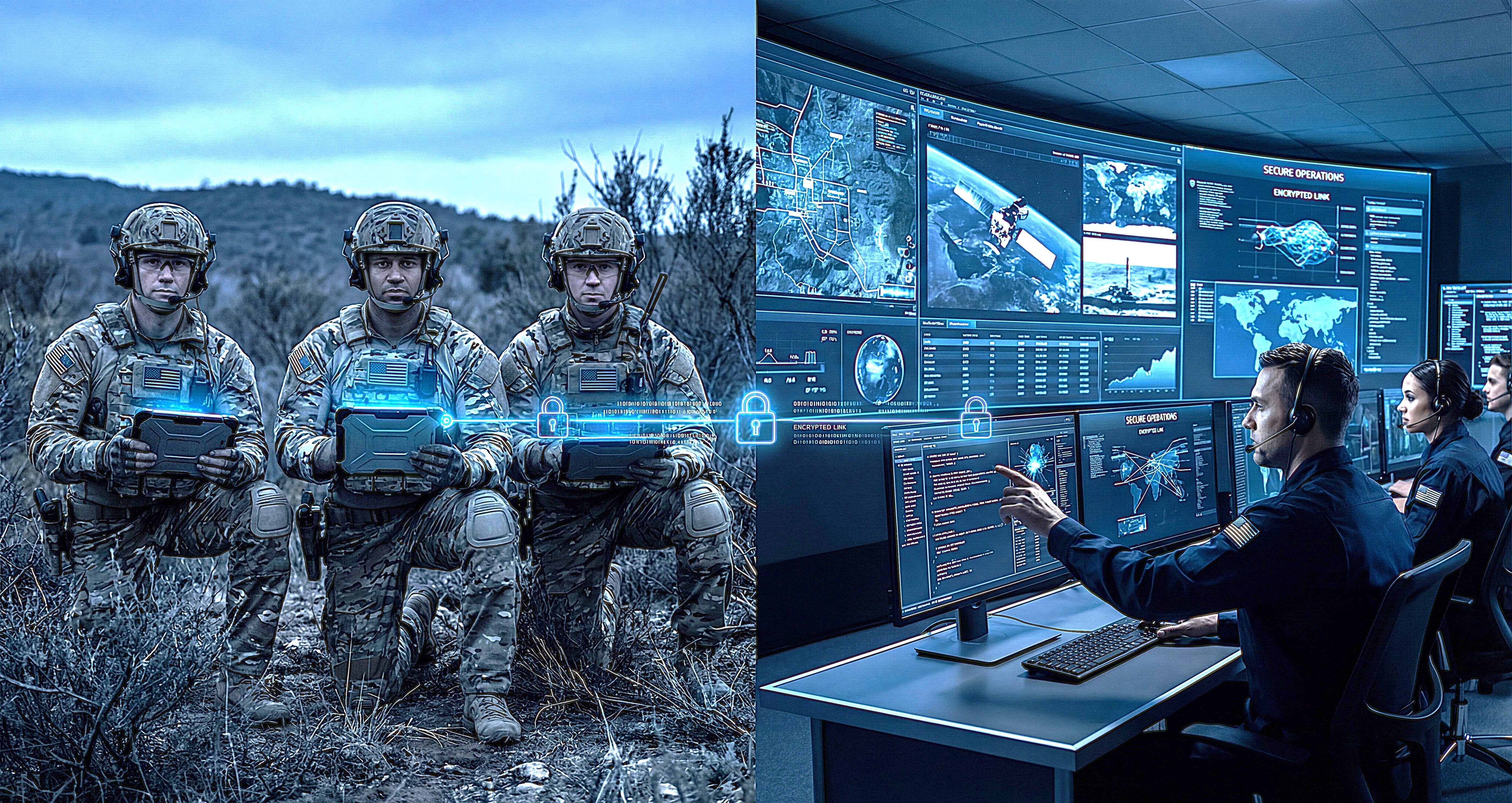Connect with us

The Power of Visual Content in Tech-Enabled Business Collaboration
In the modern business landscape, technology is pivotal in how teams communicate and collaborate. As businesses shift to digital platforms, the need for effective communication becomes more critical than ever. Remote teams, digital workflows, and tech-driven collaboration have reshaped how companies operate, making clear communication a priority. Visual content is one of the most overlooked but essential factors in this change in communication. Whether through diagrams, videos, infographics, or images, visual elements enhance understanding, foster engagement, and drive productivity.
Technology's role in collaboration is undeniable, but without effective communication strategies—particularly visual ones—messages can easily get lost in translation. In this article, we will explore why visual content is so powerful in enhancing tech-enabled business collaboration and how businesses can maximize its benefits.
The Remote Work Revolution: A Tech-Driven Necessity
Driven by global changes in work culture and supported by technological advances, remote working is becoming more widespread, changing the way businesses operate. Before the pandemic, remote working was an option for some companies, but it has now become an essential part of the work environment. According to FlexJobs, about 80% of companies offer some form of remote work options, with over half of employees worldwide working remotely on a regular basis.
However, the rise of remote work has also introduced new communication challenges. Distributed teams often face difficulties maintaining clear and concise communication when relying solely on text-based tools like email or messaging platforms. Long email threads, ambiguous text messages, and misinterpretations can slow down workflows. In this context, visuals step in as a much-needed solution.
Visual content simplifies complex information, reduces the risk of misinterpretation, and allows teams to work together more effectively—even from different locations. Whether it's a simple diagram explaining a process or a presentation filled with relevant images, visual aids provide clarity and enhance engagement, making collaboration smoother and more effective.
Why Visual Content Matters in Business Collaboration
Visual content is more than just an enhancement; it's a necessary tool for today's businesses. The power of visuals lies in their ability to transcend words and deliver clear, impactful messages in seconds. Here are key reasons why visual content matters in business collaboration:
Speed of Understanding:
Research shows that the brain processes visuals significantly faster than text. The human brain can interpret images in just 13 milliseconds, while text takes much longer to read and comprehend. When working on complex projects, visuals such as flowcharts or timelines can quickly convey the core message, reducing time spent explaining details.
Enhanced Memory Retention:
Visuals not only speed up comprehension but also help people retain information better. Studies indicate that people remember up to 65% of visual information after three days, compared to just 10% of text-based information. In a business environment, this means team members are more likely to remember key points and act on them when visual content is involved.
Increased Engagement:
Visuals attract attention more effectively than text alone. When working with remote teams, engagement can be a challenge, especially during virtual meetings or presentations. Using visual aids like images, graphs, or short videos can help keep participants engaged, ensuring that important information isn't overlooked.
Simplifying Complex Ideas:
Visual content makes it easier to communicate complex concepts. For example, data-heavy presentations or technical reports can be overwhelming if presented only with text or numbers. Infographics, charts, and diagrams simplify these ideas, helping everyone grasp critical points without unnecessary confusion.
Bridging Cultural and Language Gaps:
In global teams, language barriers can complicate communication. Visuals, however, provide a universal language that anyone can understand. Whether you're working with colleagues from different countries or communicating with international clients, visuals can help ensure the message is clear, regardless of language differences.
Tech Tools That Support Visual Content Integration
Today's tech tools offer businesses many ways to incorporate visual content into their daily operations. Collaboration platforms and digital tools are increasingly focused on offering visual content features that make communication more effective. Here are a few key tools that facilitate the integration of visuals into business workflows:
- Google Workspace: A staple for many businesses, Google Workspace allows teams to create and share documents, spreadsheets, and presentations in real-time. The platform supports various visual elements like graphs, images, and diagrams, which can be embedded into documents to enhance clarity and understanding.
- Asana and Trello: Project management tools like Asana and Trello make it easy to organize tasks visually. These platforms use color-coded boards, timelines, and lists that teams can interact with. Attaching images, screenshots, or diagrams to tasks provides visual context, helping teams stay on track.
- Slack and Microsoft Teams: Both of these platforms allow users to embed and share visual content such as images, videos, and GIFs directly in conversation threads. These visuals make everyday communications more dynamic, ensuring ideas are conveyed quickly and effectively.
- Zoom and Microsoft Teams: Video conferencing tools are now essential for remote communication. Features like screen sharing, whiteboards, and real-time annotations make it easy to visualize ideas during virtual meetings, improving collaboration across teams.
By embracing these tools and prioritizing the use of visual content, businesses can not only improve communication but also foster a culture of transparency and collaboration.
The Role of Business Pictures in Effective Communication
Pictures and visuals are critical in maintaining engagement, especially during important business communications such as presentations, pitches, and internal reports. The use of high-quality business images can set the tone, communicate professionalism, and even build brand identity. For example, incorporating professional business pictures at Depositphotos into corporate documents can make reports or presentations more visually appealing and impactful.
Visuals such as graphs, product images, and charts offer clear insights when presenting complex data or launching new products. A well-chosen image can capture attention and convey meaning that text alone may not fully express. By using business pictures strategically, companies can deliver messages that resonate with their audience, whether they are employees, clients, or stakeholders.
Visual Storytelling: A Powerful Collaboration Tool
Visual storytelling is another practical approach to fostering team collaboration. This method uses images, videos, and graphics to tell a story or explain a concept. Visual storytelling has become increasingly popular in business, particularly when sharing information internally or educating customers about new products.
For example, when onboarding new team members, companies can use short explainer videos or interactive tutorials. These visual aids not only speed up the onboarding process but also make it more engaging, helping new hires understand their role faster and more effectively. Similarly, when explaining complex product features to customers, businesses can use animated videos to highlight key features, making the product easier to understand.
Future Trends in Visual Collaboration: AR, VR, and AI
As technology advances, visual content is poised to play an even more prominent role in business collaboration. Emerging technologies like augmented reality (AR), virtual reality (VR), and artificial intelligence (AI) are already revolutionizing how businesses work.
- Augmented Reality (AR): AR allows teams to collaborate on 3D models in real-time, offering a hands-on experience even from remote locations. This is especially useful for industries like architecture, engineering, and product design, where seeing a project come to life in a virtual space can provide critical insights.
- Virtual Reality (VR): VR creates immersive environments where remote teams can meet, collaborate, and visualize projects together. VR tools allow teams to brainstorm, design, and interact in a virtual space, which can be especially helpful for geographically dispersed teams.
- Artificial Intelligence (AI): AI tools are increasingly being integrated into visual content platforms, offering businesses insights and automation. AI can analyze large amounts of visual data and identify patterns, trends, or areas for improvement. By leveraging AI, teams can make data-driven decisions faster and more accurately.
Practical Steps for Businesses to Integrate Visual Content
For businesses looking to integrate visual content into their collaboration strategies, here are some actionable steps:
1. Choose the Right Tools: Ensure your team uses collaboration platforms that support visual content, such as Zoom for screen sharing or Asana for visual task tracking.
2. Invest in High-Quality Visuals: Platforms of business pictures offer a wide selection of professional images that can enhance presentations, reports, and marketing materials.
A photo enhancer can take these visuals a step further by improving lighting, contrast, and sharpness to ensure they look crisp and professional. This added polish can make a significant difference in how your brand is perceived.
3. Encourage Visual Communication: Train your team to use visuals effectively in presentations and daily communications. Incorporate infographics, charts, and diagrams into your workflow for clarity and efficiency.
4. Stay Ahead of Trends: Keep an eye on emerging tech like AR, VR, and AI, which are becoming vital in collaborative efforts, particularly in design-heavy or remote-centric industries.
Conclusion
Visual content is no longer just a nice-to-have feature in business collaboration—it's essential. With the right visual elements, businesses can improve clarity, drive engagement, and make communication more efficient, especially in tech-enabled environments. As tools evolve, the importance of visuals will only grow, and businesses that harness their power will stand out in today's digital-first landscape.
By incorporating visual elements into every aspect of collaboration—whether through business pictures from platforms like Business Pictures, interactive storytelling, or next-gen technologies like AR and VR—companies can unlock new levels of productivity and success.








